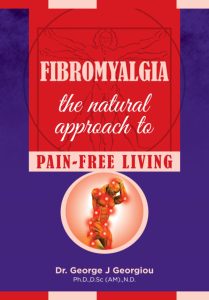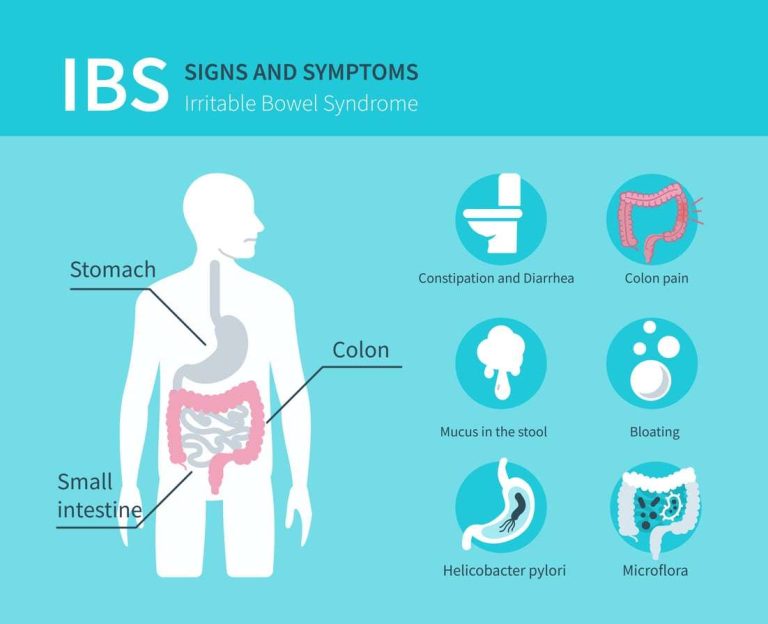Thai Diet and Coconut Milk
We hear a great deal these days about the presumed health benefits of Asian diets. China and Japan are presented as exemplars of “low-fat, high fiber, largely vegetarian” Oriental regimes. The foods of Thailand are often ignored in such discussions. The delicious, spicy cuisine of Siam is rich in saturated fat from coconut oil and lard, relatively low in fiber and features many and varied animal foods.
Yet a comparison of autopsy reports on a group from Bangkok with a group from the US found that coronary occlusion or myocardial infarction was eight times more frequent in the US, diabetes was ten times more frequent and high blood pressure about four times more frequent.(4) Even more intriguing is the fact that Thailand has the lowest rates of cancer, for both men and women, of all the 50 countries studied by the World Health Organization.(3) Here is yet another paradox – Le Paradoxe Thailandais -that the “experts” would rather ignore than explain.
“Thai cooking is an art form,” writes the author of a Thai cookbook (8), and as anyone who has frequented a Thai restaurant knows, a particularly delicious art form. Mouthwatering curries and soups made from chicken or fish broth, and creamy with whole coconut milk, offer the palate a variety of delicious spices and flavors, including coriander, anise, cumin, nutmeg, lemon grass, chilies, ginger, turmeric (a variety of ginger), basil, mint, garlic and lime. Seafoods are plentiful in the diet, including fresh saltwater and freshwater fish, mackerel, shrimp, crab, eels, salted fish and dried fish.
Fish sauce and shrimp paste are used frequently as seasonings. Pork and beef are consumed by those who can afford them, often raw or pickled. Other animal foods less likely to be featured on restaurant menus, but consumed in the villages, include duck and chicken and their eggs, water buffalo and more unusual items like snails, caterpillars, lizards, frogs, rats, snakes, squirrels and other small animals. Plant foods include eggplant, onions, cabbage, baby corn, mushrooms, kale, mustard greens, radish, celery, cucumber, lettuce, several varieties of vegetable gourd, water chestnuts and swamp cabbage, which grows in ditches and rice paddies. Fruits include plums, tamarinds and bananas.
Two plant foods are particularly associated with Thai cuisine. One is the kaffir lime (Citrus hystric), with a distinctive wrinkled skin. The rind and leaves give a wonderful flavor to soups and curries. The other is bitter melon (Momordica chiantria), of which there are several varieties. Bitter melon looks like a lime-green elongated cucumber with a furrowed, convoluted rind. The pulp is very bitter – an acquired taste for Americans – but the Thais are fond of it and believe it has potent healing qualities. (A small variety of M. chiantria occurs wild in the southern United States, where some rural Blacks used it as a potent medicine, calling it “Serasee.”)
Soy foods play a minor role in Thai cooking. Bean curd is used in soups while fermented soybeans, soybean paste and soy sauces are used as flavorings. But
other legumes such as black beans and mung beans are either sprouted or used in the making of sweets. “Yard long” beans and winged beans are eaten as vegetables.
Desserts made from coconut, fermented glutinous rice and bean pastes are sweetened with unrefined cane sugar or palm sugar. Overall, sweeteners are used
sparingly in the traditional Thai diet.
Thai dishes are always served with rice. In fact, the generic term for anything served with rice is “not rice.” Long grained, nonglutinous rice is used in central and southern parts of Thailand, while sticky or glutinous rice is the mainstay of the diet in the northern and northeastern regions of the country. With few exceptions, the rice used is polished white rice.
In the early 1950’s, a group of investigators from Cornell University made a detailed survey of food habits in Bang Chan, a village in the rice growing
region twenty miles northeast of Bangkok.(2) They determined that about four-fifths of calories came from rice in both prosperous households and those less well off. A few of the families still consumed home-milled rice, a method that removed most, but not all, the bran and other nutrients.
The vast majority, however, took their rice to a local machine mill which returned the product to them in the form of thoroughly refined white rice. Although the machine mills are relatively new to Thailand, the practice of hand milling or home pounding seems to date from ancient times, and was carried out even though it involved a good deal of work. If brown rice was ever used in Thai cooking, the memory of this custom is buried in antiquity. The bran or polishings from hand milled rice were given to chickens and other livestock, and never used for human food. In fact, one peasant explained to investigators that the reason he continued to hand mill, when machine milling was readily available, was that if he took his rice to the local mill, the miller would keep the polishings for himself, and rice bran made excellent chicken feed!
Common protein foods for the villagers of Bang Chan included fish – mostly fresh water fish raised in ponds—some pork and eggs. Lard was used for frying. Chicken and other fowl were usually consumed during feast days. The meat of water buffalo was available when a buffalo became too old to work, and dried beef paste was also used as a flavoring in cooking. The Cornell researchers did not discuss what was done with the internal suet and slab of back fat from the older buffalos that were butchered. The amounts can be considerable – one animal may yield well over one hundred pounds of valuable suet and tallow.
Other animal foods used in the village included turtles, snails, eels, frogs, cobra and other snakes. Field rats, available all year long, were roasted. In general, the villagers prepared their own fermented shrimp paste and sauce. Many families grew herbs and bananas in kitchen gardens, but few vegetables. Instead they gathered swamp cabbage from the canals, or purchased vegetables.
Given the emphasis on white rice in the Thai diet, it is not surprising to find that one of the chief health problems, particularly among the poorer families in the villages, is beriberi, a vitamin B deficiency disease. Those families who did not suffer from the disease ate more animal foods, particularly beef, which they could afford to purchase. Ironically, those families with few chickens ate more eggs because those with numerous fowl took the eggs to market to sell. To the dismay of investigators, the villagers of Bang Chan regarded rice as a strength-giving food.
They believed that children needed rice “to make them fat,” and that too many “not rice” dishes gave children pot bellies. Children were encouraged to eat hot foods because the hot taste made them eat more rice, and could be punished if they ate a whole egg at a meal. One affluent farmer, however, expressed the opinion that these ancient beliefs were based on thrift. He said that “thrifty people did not want to spend much on a baby, therefore they said that if a child ate too much “with-rice” he would be potbellied but thin in the upper part of the body, and that eating eggs would cause dental caries.”
The Cornell investigators noted that overall intake of protein, vitamins and minerals among all but the poorest villagers seemed to be adequate, with the exception of calcium, although there were few signs of calcium deficiency except for short stature. Probably calcium levels were higher than those measured in staple foods, due to the use of bone broths in soups and unshelled shrimp in shrimp paste.
The other major health problem in Thailand is that posed by parasites and other pathogens in drinking water, and overall conditions deemed to be unsanitary. The Cornell investigators noted that “untreated water was the customary beverage with meals. Ordinarily no distinction was made in the source of drinking water for children and adults, although boiled water was given to mothers and infants to drink during the post partum rest period.”
During the monsoon season, rain is caught in tubs and provides water for drinking and washing. Stored rain water may be relatively clean but overall conditions make germ-conscious Westerners squirm. High water flooded the ground in Bang Chan but “caused time-consuming inconvenience only in the earth-floored cottages where it was necessary to keep the rice stores and chickens dry, move the cook-stove, and either build plank walks or cook standing ankle deep in water.”
When the supply of rain water becomes exhausted, villagers drink water from the canals, rice paddies and fish ponds. In general, there are no sewage plants or garbage collection systems in the villages – all garbage and human and animal waste go into the fields and waterways. Given the fact that most Thais – and their livestock – consume water that can only be described as filthy, and that both animal and plant foods serve as hosts to numerous parasites and pathogens(5), it seems miraculous that the entire nation has not succumbed to food and water borne illness. On the contrary, most western tourists express amazement at the sight of healthy, smiling children swimming in the murky waters of Bankok’s canals.
The answer lies in the protective factors inherent in the traditional diet. Pickled garlic, onion and peppers, consumed frequently as condiments, inhibit the development of parasite eggs.(6) The practice of fermenting pork and other meats kills the larvae of the trichinosis organism.(1) Native maklua berries are an effective treatment for hookworm.(7)
But the most protective factor in the Thai diet – and one most ignored by investigators – is the lauric acid found in coconut products. Coconut oil contains almost 50% of this 12-carbon saturated fat, which the body turned into
monolaurin, a substance that efficiently kills parasites, yeasts, viruses and pathogenic bacteria in the gut.
Coconut oil provides additional benefits. It strengthens the immune system and promotes optimal development of the brain and nervous system. It protects against cancer and heart disease, and promotes healthy bones. Finally, coconut oil seems to be the best fat for ensuring the proper uptake of omega-3 fatty acids into the tissues (9). This may explain the beautiful, velvety skin tone of the Thais.
The Thai diet is said to be low in fat – about 15% of calories is the consensus among “experts.” Most of this fat is relatively saturated coconut oil or lard. Poor families use watered down coconut milk for curries, and lard very sparingly. But more affluent families eat pork and beef frequently, make their daily curry with luscious thick creamy whole coconut milk and use coconut oil for sauteing. Tiny dried shrimp sauteed in coconut oil and formed into a cake is typical of Thai dishes that are both delicious and nutritious – rich in vitamin D, calcium, high quality protein, omega-3 fatty acids and protective saturated fats.
It can be argued that even among poor families, fat consumption is higher than the accepted 15% figure. The Cornell investigators made their own determinations of the amount of fat supplied by coconut milk, because “use of figures now available in food value tables, for coconut milks as prepared in Bang Chan, would lead to gross overestimate of caloric value and fat content of the diets.” What an amazing confession!
In an effort to improve the health of Thai villagers, medical workers have encouraged the boiling of water, consumption of whole rice or rice polishings and the use of polyunsaturated oils instead of coconut oil and lard. It is probably impossible to install western type sewage systems in the soggy Thai rice lands. Moreover it is unwise in that such systems would deprive the land of valuable manuring. A more rational – and certainly more effective – approach would be to encourage protective traditional food ways and higher prices for cash crops, so that this nation of subsistence farmers could afford more fish, meat, and coconut milk, to balance their intake of rice.
It seems unlikely that the Thais will accept brown rice -and probably fool hearty as well, given that phytic acid in rice bran blocks calcium, already low in the Thai diet. Instead, millers could receive subsidies to return rice polishings to farmers, and farmers could be encouraged to eat more vitamin-B rich eggs from chickens fed rice bran.
The body stores the carbohydrates from white rice as fat. Thus white rice may be a vital factor in the diet if overall fat consumption is low. But with white rice as the basis of Thai cuisine, it is imperative that “not rice” foods be rich in nutrients from adequate amounts of plant and animal foods grown on mineral rich soils, seafood and above all healthy, protective coconut oil. The authors are grateful to Tom and Nee Sinclair for their help in writing this article.
References
1. Dissamarn, R et al, “Viability of larvae of Trichinella Spiralis in some common Thai dishes,” J Med Assoc Thailand, 1966 49:12:985
2. Hauck, Hazel M. et al, Food Habits and Nutrient Intakes in a Siamese Rice Village, Studies in Bang Chan, Cornell University, Ithaca, New York, 1958
3. Harras, Angela, ed, Cancer Rates and Risks, 4th Edition, 1996, U. S. Department of Health and Human Services, National Institutes of Health.
4. Hirst, Albert E, et al, “A comparison of Atherosclerosis of the Aorta and Coronary Arteries in Bangkok and Los Angeles,” Am J Clin Path, 1962, 38:2:162-170.
5. Manning, George S et al, “Fasciolopsis buski in Thailand,” Amer J Trop Med Hyg, 1970 19:4:613-619
6. Papasarathorn, T et al, “Effects of garlic, onion, red pepper and green pepper pickled in vinegar upon the development of pig Ascaris eggs,” Public
Health Alumni Bull (Thailand), 1963 3:2:1010
7. Sadun, Elvio, et al, “The effect of maklua (diospyros mollis) in the treatment of human hookworm,” J Parasit, 1954 40:1:49-53
8. Srisawat, Pinyo, The Foods of Thailand, SLG Books, Berkeley, CA, 1998
9. Oliart Ros, Rosa M et al, “Effects of Dietary polyunsaturated Fatty Acids on Sucrose-Induced Cardiovascular Syndrome in Rats,” American Oil Chemists Society Annual Meeting, Chicago, IL, May 1998.
Copyright © 1999 Sally Fallon and Mary G. Enig, PhD. All Rights Reserved. First published in the Price-Pottenger Nutrition Foundation Health Journal Vol 22, No 4. (619) 574-7763.
Taken from the Weston A. Price Foundation web site at http://www.westonaprice.org
Read other interesting articles such as:










